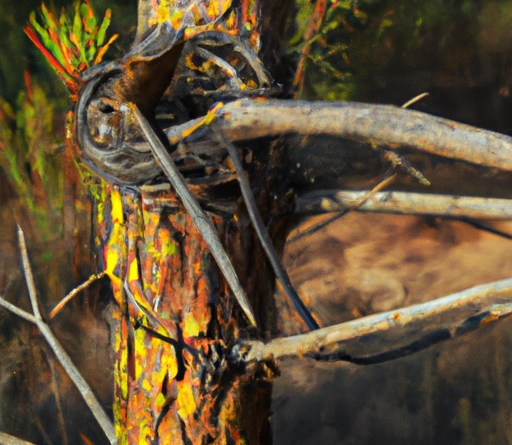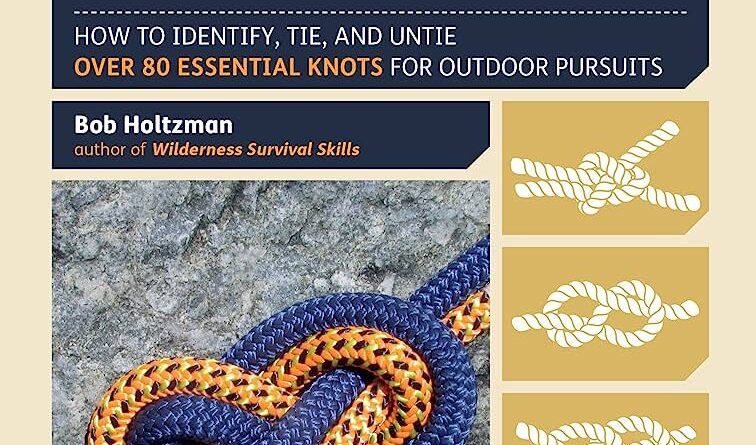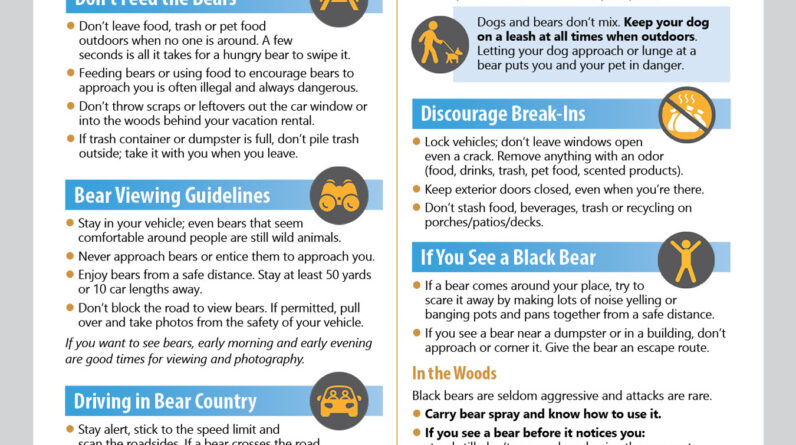
Introduction
Encountering wildlife can be an exhilarating experience, but it’s important to be prepared for any unexpected situations that may arise. Whether you’re hiking in the wilderness or exploring national parks, being equipped with essential survival techniques can make all the difference. In this article, we will explore a range of strategies that will help ensure your safety during wildlife encounters.
Identifying Wildlife
The first step in safely navigating a wildlife encounter is correctly identifying the creature you’ve come across. Knowing the behavior, habitat, and potential threats associated with different species is crucial for making informed decisions on how to act. It’s important to stay calm and avoid sudden movements, as these can provoke an animal’s defensive instincts.
Maintaining Distance
Maintaining a safe distance is key when it comes to wildlife encounters. Most animals prefer their personal space and may become agitated if they feel threatened. By respecting their territory and keeping a respectful distance, you reduce the risk of triggering an aggressive response.
Reacting to Aggressive Behavior
Despite our best efforts to avoid confrontation, sometimes wildlife may display aggressive behavior towards us. In such cases, it’s essential to remain calm and slowly move away without turning your back on the animal. Avoid direct eye contact and never attempt to outrun or provoke the creature. Instead, create distance and find shelter if possible.
Remember, knowledge and preparedness are your greatest allies when it comes to wildlife encounters. By being aware of the wildlife in your surroundings, respecting their boundaries, and knowing how to react appropriately, you can greatly enhance your chances of a safe and enjoyable wildlife experience. So, venture forth into nature with confidence, and embrace the wonders of the animal kingdom while staying safe and respectful.

Understanding Wildlife Behavior
When it comes to surviving encounters with wildlife, understanding their behavior is key. By recognizing common animal behaviors and how they react to human presence, you can greatly increase your chances of staying safe in the great outdoors.
Common animal behaviors
Animals have their own unique behaviors in the wild. Some animals, like bears, may exhibit defensive behaviors if they feel threatened or if their territory is invaded. Others, like snakes, may display aggressive behaviors when they perceive a threat. It’s important to research and familiarize yourself with the behaviors of the specific wildlife species you may encounter in the area you are exploring.
How wildlife reacts to human presence
Wildlife will typically react differently to human presence based on their previous interactions with humans. Some animals may have become habituated to human activity, making them less likely to feel threatened or aggressive. Others may be more cautious or even wary towards humans. Respect their space and avoid any actions that may provoke a defensive response.
Remember, each encounter with wildlife is unique, and it’s crucial to stay calm, maintain a safe distance, and never attempt to touch or feed any wild animals. By understanding wildlife behavior and being prepared, you can enjoy the beauty of nature while minimizing the risks associated with wildlife encounters. Stay informed, stay safe, and make every wildlife encounter a memorable experience.
Research and Preparation
Identifying wildlife species in specific areas
Before venturing into any wildlife area, it’s crucial to gather the necessary knowledge about the specific species you may encounter. By identifying the wildlife species in a given area, you’ll be better prepared to handle potential encounters. Take the time to familiarize yourself with the distinct characteristics of each species, so you can quickly recognize them in the wild.
Learning about their habitats and habits
In addition to identifying the species, understanding their habitats and habits is key to your survival. Each animal has unique preferences for where they live and how they behave. Research their preferred habitats, such as dense forests or open plains, as well as their daily routines, feeding patterns, and breeding seasons. This knowledge will help you anticipate their behavior and avoid any unnecessary conflicts.
By taking the time to research and prepare before your wildlife adventure, you greatly increase your chances of a safe and successful encounter. You’ll gain a better understanding of the specific species you may encounter, allowing you to recognize them more easily. Additionally, studying their habitats and habits will enable you to anticipate their behavior, reducing the risk of potentially dangerous situations. So, remember, when it comes to encountering wildlife, preparation is key.

Essential Survival Techniques for Wildlife Encounters
Avoiding Wildlife Encounters
Encountering wildlife can be both thrilling and dangerous. To ensure your safety, it is crucial to understand how to avoid such encounters in the first place. In this section, we will discuss two essential techniques: choosing appropriate trails and campsites, and using bear-resistant food containers.
Choosing appropriate trails and campsites
When venturing into wildlife-rich areas, it is imperative to research and select trails and campsites wisely. Look for well-maintained paths that are frequently used by hikers and campers. Avoid areas known for high wildlife activity or nesting grounds, as these increase the likelihood of encounters. Furthermore, it’s advisable to inquire with local authorities or experienced hikers about recent wildlife sightings in the area you plan to visit. By choosing carefully, you significantly minimize the risk of unexpected wildlife encounters.
Using bear-resistant food containers
If you are hiking or camping in bear country, it is crucial to store your food properly to prevent attracting these creatures. Bear-resistant food containers are designed to keep your meals secure and inaccessible to wildlife, reducing the chance of an encounter. Additionally, they provide a scent barrier, minimizing odors that might attract bears. Remember, bears have a strong sense of smell, and keeping your food out of reach is key to avoiding any dangerous encounters.
By following these important techniques, you can greatly reduce the chances of wildlife encounters during your outdoor adventures. Stay alert, prepare well, and respect the natural habitats of these magnificent creatures. Stay safe!
Reacting to Wildlife Encounters
Encountering wildlife can be exciting and awe-inspiring, but it’s essential to know how to react to ensure your safety and the well-being of the animals. In this section, we will discuss some vital techniques that can help you navigate these encounters with confidence.
Identifying signs of aggression
Being able to identify signs of aggression in wildlife is crucial for your safety. Animals such as bears and big cats may display certain behaviors when feeling threatened or protective. Look for warning signs like raised fur, bared teeth, growling, or aggressive posturing. If you notice any of these signs, it’s important to back away slowly and maintain a safe distance.
Maintaining calm and avoiding sudden movements
When encountering wildlife, it’s crucial to remain calm and composed. Sudden movements or loud noises can startle animals, leading to increased aggression or defensive behavior. Instead, try to move slowly and avoid eye contact, as this can be seen as a challenge. By maintaining a calm demeanor, you are more likely to mitigate the risk and allow the animal to move away peacefully.
Remember, these techniques are only general guidelines and may vary depending on the specific wildlife species you encounter. Always prioritize your safety and consult local guidance or experts for more detailed instructions. By being aware and prepared, you can ensure a safe and memorable experience when encountering wildlife.
Defending Yourself in Dangerous Situations
Encountering wildlife can be thrilling, but it’s important to remember that some animals can pose a threat to your safety. In this section, we will discuss essential survival techniques to defend yourself in dangerous situations.
Using bear spray effectively
If you find yourself face-to-face with a bear or other aggressive wildlife, bear spray can be a lifesaver. Ensure you have it easily accessible, always within arm’s reach. When using bear spray, hold it in both hands and aim for the animal’s face. Spray in a sweeping motion from side to side to create a fog barrier that the animal must pass through. Remember, bear spray is only effective if used properly, so familiarize yourself with the instructions before your adventure.
Creating distance and finding shelter
If a potentially dangerous animal approaches, it’s crucial to create distance between you and the creature. Slowly back away while maintaining eye contact. Avoid turning your back or running, as these actions may trigger a pursuit response. If possible, seek shelter in a vehicle, tent, or tree. Remember, some animals have excellent climbing abilities, so find the most suitable refuge. Once there, assess the situation and wait until the animal loses interest or moves away.
By learning and implementing these essential survival techniques, you can better protect yourself in wildlife encounters. Always prioritize your safety and respect the animals’ habitats. With the right knowledge and precautions, you can enjoy the wonders of nature while staying out of harm’s way.

First Aid and Emergency Response
Encountering wildlife can be an exhilarating experience, but it’s important to be prepared for any unexpected situations that may arise. This section will provide you with essential survival techniques to handle first aid and emergency response during wildlife encounters.
Administering first aid for animal bites or stings
In the unfortunate event that you are bitten or stung by a wild animal, it’s crucial to take immediate action. Start by cleaning the wound thoroughly with mild soap and water to reduce the risk of infection. Applying a sterile bandage will help control bleeding and protect the wound. Remember, it’s vital to seek medical attention as soon as possible to receive proper treatment and assess the need for vaccinations or antibiotics.
Contacting emergency services for assistance
When faced with a critical situation during a wildlife encounter, it’s crucial to reach out to emergency services for professional assistance. Dial the emergency number in your region and provide them with detailed information about your location, the type of wildlife involved, and any injuries sustained. Remain calm and follow their guidance on how to stay safe until help arrives.
Remember, these survival techniques for first aid and emergency response are just a starting point. It’s essential to continue educating yourself on wildlife encounters and always prioritize your safety when interacting with wild animals. Stay prepared, stay informed, and stay safe.
Conclusion
Stay Calm and Assess the Situation
In conclusion, when it comes to encountering wildlife, the key is to stay calm and assess the situation. Remember, animals are just as scared of you as you are of them. By remaining calm, you can avoid provoking any aggressive behavior. Take a moment to evaluate the animal’s body language and behavior to determine if it poses a threat or if it is simply curious.
Make Yourself Appear Larger
If you find yourself in a potentially dangerous wildlife encounter, making yourself appear larger can help deter the animal. Stand tall, raise your arms, and try to make as much noise as possible. This will show the animal that you are a formidable presence and may cause them to think twice before approaching.
Back Away Slowly
If the animal shows signs of aggression or starts moving towards you, it is essential to back away slowly. Avoid turning your back on the animal and do not run, as this may trigger a chase response. Keep your eyes on the animal at all times, but avoid direct eye contact, as this can be interpreted as a threat.
Remember, each encounter is unique, and it is crucial to be prepared and educated about the wildlife in your area. By following these essential survival techniques and respecting the animals’ space, you can greatly reduce the risk of a potentially dangerous encounter. Stay safe and enjoy the wonders of the natural world!








